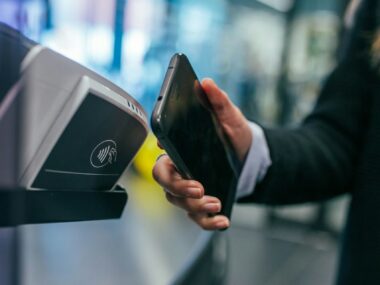In the evolving landscape of digital threats and data breaches, cybersecurity has never been more critical. As technology advances, so do the tactics of cybercriminals. To combat these growing threats, innovative solutions are needed. One of the most promising technologies in the fight against cybercrime is blockchain. Known primarily for its association with cryptocurrencies like Bitcoin, blockchain technology holds immense potential for enhancing cybersecurity across various sectors.
Understanding Blockchain
Before diving into its applications in cybersecurity, it’s essential to understand what blockchain is. At its core, blockchain is a decentralized, distributed ledger technology that records transactions across multiple computers in a way that ensures the security, transparency, and immutability of data. Unlike traditional databases controlled by a single entity, blockchain relies on a network of nodes (computers) that validate and record transactions through consensus mechanisms.
Key Features of Blockchain:
- Decentralization: No single point of control or failure.
- Transparency: All participants can view recorded transactions.
- Immutability: Once recorded, data cannot be altered or deleted.
- Security: Advanced cryptographic techniques protect data.
Blockchain and Cybersecurity: A Synergistic Relationship
The application of blockchain in cybersecurity is particularly significant due to its inherent properties. Here’s how blockchain can revolutionize data protection and enhance cybersecurity:
1. Enhanced Data Protection
Data integrity and protection are paramount in cybersecurity. Blockchain’s decentralized nature ensures that data is not held in a single location, reducing the risk of hacks and unauthorized access. In a blockchain-based system, data is encrypted and distributed across multiple nodes, making it extremely difficult for cybercriminals to compromise the entire network.
2. Improved Encryption
Encryption plays a crucial role in securing data. Blockchain uses advanced cryptographic algorithms to secure transactions and data. Each transaction is encrypted and linked to the previous one, forming a chain of encrypted data blocks. This ensures that data remains secure and tamper-proof, even if a single block is breached.
3. Secure Identity Verification
Identity theft and unauthorized access are significant concerns in cybersecurity. Blockchain can provide a secure and reliable method for verifying identities. By using decentralized identifiers (DIDs), blockchain allows users to control their digital identities without relying on centralized authorities. This reduces the risk of identity theft and ensures that only authorized individuals can access sensitive information.
4. Decentralized Storage Solutions
Traditional data storage solutions rely on centralized servers, making them vulnerable to attacks. Blockchain-based storage solutions distribute data across a network of nodes, eliminating single points of failure. This decentralized approach ensures that data remains accessible and secure, even if some nodes are compromised.
5. Transparent and Auditable Transactions
Blockchain’s transparency allows all participants to view and verify transactions. This transparency is invaluable in cybersecurity, as it ensures that all actions are recorded and auditable. Any unauthorized changes or anomalies can be quickly identified and addressed, reducing the risk of fraud and enhancing trust among stakeholders.
Real-World Applications of Blockchain in Cybersecurity
Blockchain technology is already being implemented in various cybersecurity applications, demonstrating its potential to protect data and thwart cyber threats. Some notable examples include:
1. Supply Chain Security
In supply chains, blockchain is used to ensure the integrity and authenticity of products. Each step of the supply chain is recorded on the blockchain, allowing businesses to track products from origin to delivery. This transparency helps prevent counterfeit goods and ensures that products meet quality standards.
2. IoT Security
The Internet of Things (IoT) connects billions of devices, creating numerous entry points for cyberattacks. Blockchain can enhance IoT security by providing a decentralized method for verifying and authenticating devices. This ensures that only authorized devices can communicate within the network, reducing the risk of attacks.
3. Healthcare Data Protection
The healthcare industry handles vast amounts of sensitive patient data, making it a prime target for cybercriminals. Blockchain can secure patient records, ensuring that data is only accessible to authorized parties. Moreover, it provides a transparent and immutable record of data access, enhancing accountability and compliance with regulations.
4. Financial Transactions
Blockchain’s secure and transparent nature makes it ideal for financial transactions. Banks and financial institutions are leveraging blockchain to enhance the security of transactions, reduce fraud, and streamline processes. Smart contracts self-executing contracts with coded terms—are also being used to automate and secure financial agreements.
Challenges and Considerations
While blockchain offers significant advantages for cybersecurity, it is not a silver bullet. Implementing blockchain technology comes with its own set of challenges and considerations:
1. Scalability
Blockchain networks can face scalability issues, particularly public blockchains with many participants. As the number of transactions grows, the network can become slower and less efficient. Solutions like sharding and off-chain transactions are being developed to address these challenges.
2. Energy Consumption
Blockchain, especially Proof-of-Work (PoW) based systems like Bitcoin, can be energy-intensive. The computational power required for mining and validating transactions can lead to high energy consumption. Alternative consensus mechanisms like Proof-of-Stake (PoS) are being explored to mitigate this issue.
3. Regulatory Compliance
The decentralized nature of blockchain can create regulatory challenges. Ensuring compliance with data protection regulations like GDPR can be complex. Businesses must carefully consider legal and regulatory implications when implementing blockchain solutions.
4. Adoption and Integration
Adopting blockchain technology requires significant investment and integration efforts. Businesses must assess their existing infrastructure, train personnel, and address interoperability issues. Collaboration with blockchain experts and vendors can help streamline the adoption process.
Conclusion
Blockchain technology has the potential to revolutionize cybersecurity by providing enhanced data protection, secure identity verification, decentralized storage, and transparent transactions. Its applications span various industries, from supply chain security to healthcare data protection. However, businesses must carefully consider the challenges and regulatory implications of implementing blockchain solutions.
As cyber threats continue to evolve, embracing innovative technologies like blockchain will be crucial for safeguarding data and maintaining trust in the digital age. For tech enthusiasts, cybersecurity professionals, and business owners, understanding and leveraging blockchain can provide a significant competitive advantage.
Are you ready to explore the transformative potential of blockchain in cybersecurity? Stay ahead of the curve and protect your business with cutting-edge technology.
Call to Action
For more insights into how blockchain can enhance your cybersecurity strategy, sign up for our newsletter and stay updated with the latest trends and developments in the tech world. Let’s build a more secure future together!






